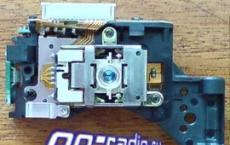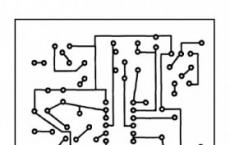Beer mug with your own hands. A mug made of wood with your own hands. Master class Beautiful wooden beer mugs with your own hands
The master's stainless mug was taken as a basis here, so he decided to stylize it like a tree. Why did I take a pre-dried wood blank (it is desirable that the texture be beautiful) and carved it on lathe a wooden glass, into which he inserted his favorite metal mug.
Let's take a look at how the master made his mug? What exactly did he need for this?
Materials (edit)
1. wooden beam 10 inches (25.4 cm)
2.mug travel (stainless steel)
3.flaxseed oil
4.cotton fabric
5.carpentry glue or epoxy
Instruments
1.wood lathe
2.set of chisels
3.brush
4.drill and 3 circular drills(to create a cavity in the workpiece)
5.sand paper
6.hacksaw
7.ruler
The process of creating a wooden mug with your own hands
And so, the first thing of course is to find suitable material, it is better if the pattern and texture of the wood is not uniform. For this, breeds are suitable fruit trees(apple, cherry, bird cherry) their drawing is very beautiful and unique. You can also use "Cap" whose pattern is very similar to marble, but its wood is quite hard and difficult to process.
Then the workpiece must be dried in natural conditions. or in a special drying chamber (who has it) Attention! The wood must be absolutely dry before processing, but if it is not dry and wet, then it will simply crack and all your work is "down the drain"
Many of you at school in the class of "Labor", studying in high school, studied a lathe for wood and turned on it (rolling pins, balusters, candlesticks, door handles and so on.) That is, they are familiar with the device and principle. But not everyone was allowed to grind on this machine (glasses and nesting dolls), but especially neat and attentive ones! Because with careless work on grinding the inner cavity, the workpiece often flew out, where the matryoshka, where the chisel)))
Next, the resulting bar must be marked with a ruler and a pencil in order to find the center by drawing 2 lines from corner to corner, the crosshair will be the center. The alignment must be strictly observed !!! Curved markings are a potential blow to the forehead, flying out the workpiece))) By the way, here on the site there are articles on making wood with your own hands
It is inserted into the guides and clamped.

The machine turns on and the master begins to grind off the excess, giving the workpiece a cylindrical look.

An important point! On the left side, a "thorn" is machined, which will then be inserted into the chuck and will hold the workpiece without 2 points of support.

Next, the internal cavity is drilled with drills, the author uses 3 drills of different diameters for this, starting with the smallest one. After that, the inside must be sanded with sandpaper put on a stick - this is necessary for subsequent turning in order to ensure a flat surface.

With the help of a chisel, the inner part is pierced.

Periodically, the master applies the bottom of the metal mug so as not to grind off the excess. Once again he stopped the machine in order to evaluate the work done.

The surface of the wooden glass is sanded with sandpaper.

And so, the inner part is machined and now the master cuts off the thorn with a hacksaw.

Next, the master takes his stainless steel marching glass and covers it epoxy resin, you can also use glue that is not afraid of temperature exposure. Attention! Do not use toxic types of glue of the "Moment" type, because when you pour boiling water into a mug, the metal will heat up and this glue will begin to evaporate its chemical elements... Be more attentive!

The epoxy coated surface is placed in a wooden glass.

Then you should wait until the adhesive dries, and then the master places the glass back into the chuck of the lathe, this is necessary in order to align the bottom of the mug to the maximum.

And one more strict instruction from the author !!! Do not cover the wooden surface with wood stain and all kinds of varnishes (because they contain chemistry). The only thing that can be used to give a more noble look to the wood is only "linseed oil" What the master successfully did without removing the mug from the machine. He took a natural cotton fabric (cotton), moistened it with oil and saturated the wood at low speed of the machine. Why does the master do it on the machine? Because you need to rub the product with oil for a long time and painfully (by hand) and everything is operational on the machine)
Every true lover of the Russian bath has a wooden jug with chilled kvass in the dressing room, and a wooden mug flaunts on its lid. But even in a city apartment it is pleasant to sit over cold kvass on a hot day. And kvass, you know, is drunk from a wooden mug. We can make such a mug ourselves.
Wooden mug
From hardwood boards 30 mm thick, we cut 12 boards 220x31 mm (conifers will not work: the drink in the mug will be flavored with bitterness and resinous aroma). At an angle of 12 0, cut off the longitudinal edges of each plank so that a trapezoid is obtained in the sections as in the figure.
We grind the boards. Stretch two tape tapes parallel on the table with the glue side up and spread the boards across with narrow edges up, applying them to each other. A canvas is formed.

We coat the adjoining edges of the boards with PVA glue, take some cylindrical object as a template and cover it with our canvas so that the adjoining edges of the boards adhere tightly to each other (this requires a cylinder of a suitable diameter).

Tie tightly around the circumference with ropes or elastic bands.

When the glue is completely dry, sand the outside and inside. Then we tighten with metal rings.

Now we cut out the bottom from the board, coat its edges with glue and insert into the mug.

We cut out the handle and glue it.

Grind and round off all sharp corners with sandpaper. The wooden mug is ready.

It is so nice to drink cool kvass from a wooden mug on a hot day or after a steam room in a bathhouse! I propose to make it with your own hands.
You will need hardwood planks: oak, birch, alder, or other. Most importantly, do not try to make a pine mug, otherwise your drink will be flavored with a resinous aroma and bitterness.
You will need to cut 12 pieces of boards 22 cm long and 3 cm thick.One side of the board should be shorter than the other in width to get a 12 degree bevel:


When the planks are cut, sand them thoroughly.
Now take the scotch tape and assemble the canvas, putting the boards to each other with the inner short side up. Let's take some cylindrical template and having smeared the ends of the boards with PVA glue, we begin to collect our mug:

We will tighten it tightly with ropes or an elastic band.

Thoroughly sand the mug inside and out when the glue is completely dry. We will tighten it with metal rings.

We cut out the bottom from the plank, so that it fits tightly, we glue the end of the bottom with glue and insert it into the mug:

Let's cut out the handle (by the way, from pine) and glue it to the mug.


All sharp details will be sanded and rounded with sandpaper. You can treat the mug with linseed oil for a nice warm shade. The main thing is not to use synthetic toxic compounds.
Please rate this post:
I thought for a long time to make from the beautiful hardwood floorboards left over from my uncle's house, it was a pity to watch such excellent material disappear. After watching a lot of videos on the Internet about how to make a mug out of wood, I decided to make a large mug, but improved the idea a little. I also had a piece of antler, and I figured it would make a good handle for a mug.
This mug is suitable for anything - you can cosplay a Viking to hang from your belt, you can use it for a butterbeer in a Harry Potter roleplaying, or just to impress your friends.
Step 1: Tools and Materials
Instruments:
- Circular machine
- Fraser
- Grinding machine
- Hammer
Materials:
- Solid wood flooring
- Wood glue
- Small nails without a cap
- Polyurethane
- Lots of rubber bands
Step 2: cut the floorboard





Show 3 more images



The floorboard is covered with grooves, so you first need to make a regular rectangular floorboard out of the floorboard. The easiest way is to cut off the tenon and groove on a circular machine, and then sand it so that no burrs remain.
After that, you must decide how many faces you want to make. Let's say there will be eight faces, we calculate the angle at which we will cut the board.
If you also decided to make an octagonal wooden beer mug, skip this paragraph. If you want to make more or fewer edges, check out the calculation I made. Since there are eight sides, we need to divide 360 ° (the number of degrees in a circle) by 8, which gives us 45 °, then from 180 ° (the total number of degrees of all angles of the triangle) we subtract 45 ° and divide the difference by 2 and get 67.5 ° (or 22.5 ° - depending on which side of the board you will measure from).
After that, we install the board on circular table at an angle of 22.5 ° (because at an angle of 67.5 ° it will be very inconvenient to saw the board on the machine).
Now you need to decide how high the goblet will be. I think 19 cm is the optimal height. Cut off eight pieces of the board at the desired angle.
Step 3: making the bottom







My mug has a deepened bottom, I really like it when you can see this notch if you lift the mug. I raised the bottom 19 mm from the base, you need to choose which height you like best. Then, on a circular machine, make a slot on each of the eight parts the same width as the thickness of the bottom you will be making. The slot depth is 6.4 mm.
Place all eight pieces together face up and glue two strips of tape and join the sides into a ring, making sure the sides fit snugly together. Place the ring on paper and trace from the inside with a pencil. Then circle another octagon around the octagon so that there is a distance of 6.4 mm between the sides of the two figures (the depth of the slot in the walls). Trace the outside perimeter of the piece of wood and cut out the bottom of the mug. Make sure the edges of the bottom fit snugly into the slots on the sides of the mug, the rubber bands will help you keep all the pieces of the mug together.
Step 4: glue the mug



You might get a little dirty at this stage. The best way gluing a mug made of wood with your own hands is to put the sides on tape, apply glue between them and on the edge of the bottom. Then slowly twist the sides into a ring, gently tapping the bottom with a hammer so that it goes into the slots. When all sides are closed in a ring, you need to wind the elastic bands outside, the more, the better. Gently wipe off excess glue that has come out inside and outside with a clean cloth.
Step 5: making the edge

After the glue has dried, we grind the edges, walls and the bottom edge a little on a grinding machine, at the same time we get rid of possible glue residues. After that, with a milling cone, make a bevel from the outer edge of the walls to the inner ones. Some part of the surface of the walls must remain flat so that the edge of the circle is not sharp. Sand the edges of the bevel so that there is a smooth transition from the edges of the beer mug to the inside walls.
In the photo there is a mug before sanding the bevel. Also sand the outside edge of the mug for easy drinking.
Step 6: making the handle







First, cut off a piece of the desired height for the handle of the mug from the antler, align the cuts with a grinding machine. Choose a place where you will attach the handle. To mount the handle, use the remaining trapezoidal pieces of the board from which the edges of the circle have been sawn off.
Drill a hole on the wrong side of the trapezoidal blocks to screw the handle to them, countersink these holes. Screw the horn to the blocks, adding a little wood glue between them. Drill small nail holes on the chamfered sides of the blocks to fit into the wood of the mug.
Glue the handle on the blocks to the mug and hammer nails into the holes. Use the clamps to press the handle against the sides of the mug and wait for the glue to dry.
Step 7: finishing coat



To complete the mug, I suggest covering it with a good coat of epoxy to seal the wood. I didn't have epoxy, so I used polyurethane. First, I covered the inner surface with a layer of polyurethane, then soaked a rag with it and applied an additional layer to each inner corner... At the bottom, the polyurethane layer is thicker than on the walls, so the bottom is better sealed.
Then I added a few more thin layers. On the outside, I covered the mug with two layers of polyurethane. I hope you enjoyed the process as much as I did. If you have any questions, write in the comments or by e-mail. Good night everybody.
PS. You can burn something on the sides or on the bottom, I look forward to your suggestions.
Kuksa is a Sami folk mug (small cup or ladle) carved from birch suvel or burl.
In our case, it will be a stylized wooden oak mug. We will sculpt this mug on a wood lathe.
We need an oak bar measuring 13.5x9.5x7.5 cm.
We mark a circle with a diameter of 9.5 cm with a compass. We draw a handle of 3 cm and draw the lines of the cuts.

We make cuts.

We cut off the excess with a chisel.

Drill a hole in the handle with a 25 mm perforated drill.

We round the workpiece on a circular.

We fasten the blank of the mug with self-tapping screws to the faceplate with the bottom down and install it on the lathe.

We begin to form the bottom and the handle.

We cut with a cutting cutter (thereby rounding the workpiece) to the maximum, just do not get carried away so as not to cut off the handle at all.

The result is such a workpiece with a rounded bottom and a non-machined "collar" of about 3 cm. The bottom is 5.5 cm.

We remove the mug from the faceplate, screw the pine lug onto the faceplate and grind the "belt" equal to the bottom, namely 5.5 cm.

Apply PVA glue, combine the "belt" of the boss with the bottom of the mug and clamp it with clamps.

Glued together, installed in the machine.



We grind and grind the inner part.
We cut it off. Here's what happened.


Here's what happened.


And also we bring it to perfection by hand grinding. Here is the result before oiling.

And already covered with linseed oil.


Kuksa is ready. Dimensions: diameter - 8.5 cm, height - 6.5 cm, length with handle - 12.5 cm.
Thank you for the attention. I hope that someone will find my master class useful.
With all respect, Andrew.
If you have a production or service that you want to tell our readers about, write to Aslan ( [email protected] ) and we will make the best report that will be seen not only by the readers of the community, but also by the site



